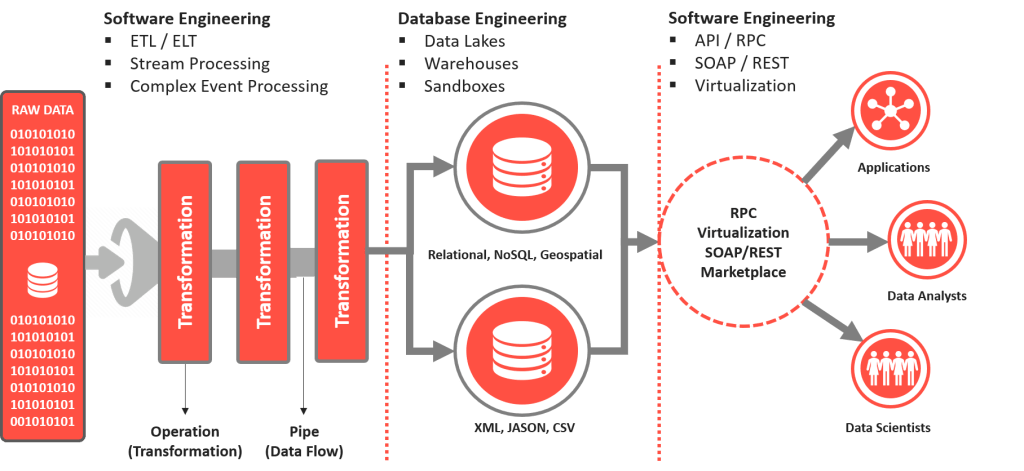Data Engineering
At prescience, you get an expert team equipping your business with tools to innovate and grow. Our data engineering analytics and solutions have helped big global brands optimize their data strategy for competitive advantage.

Data science and data engineering services are among the defining factors that will make or break a company in the age of insight and AI.
However, without the underlying data ecosystem and infrastructure, data science is a mute point. At Prescience, our data engineering competency is the bridge between data science and software development. Our data engineers power your advanced analytics initiatives by enabling data discovery, harvesting, and preparation — while also operationalizing analytical models and machine learning algorithms at scale and managing robust data pipelines for production deployment.
Get your data engineering questions answered
We Are Data Wranglers

Our breadth of knowledge ranges from relational databases to NoSQL, from batch ETL to data stream processing, and from traditional data warehousing to data lakes. Navigating the intricate world of data engineering analytics and solutions involves a variety of challenges related to scaling, security and more. We offer custom solutions to deal with the uniqueness of every business problem. Our depth of skills includes hands-on working with Hadoop, programming in Java or Python, and data modelling from star schema to document stores and graph databases.
Data Engineering Problems We Solve

One-time unification of multiple input sources into a target source.
A repeatable flow of the unified data from multiple sources.
Build modern data ingestion platforms using data lakes and data warehouses
Data quality and governance
Resources
Frequently Asked Questions
Wherever there is a large volume of data, there is a need for systems and infrastructure to collect, store, and analyze it. Data engineering provides the means to build such infrastructure for businesses and organizations across various industries. Data engineering teams focus on making data practically usable for further analysis and easily accessible, which ultimately aids in strategy development based on informed decision-making.
To improve the data quality in your organization, start with clearly defining the guiding principles for how you collect, process, and store data. Broadly, next steps should be data validation, systematic audits, and educating employees to ensure accuracy and nurture a culture that prioritizes maintaining data quality. Additionally, having the right technology in place to support data integrity and security is essential.
The major cloud service providers for data analytics solutions are Amazon Web Services (AWS), Microsoft Azure, Google Cloud Platform (GCP), and IBM Cloud. Each platform offers features and services that cater to unique business needs. A data analytics consulting company can help you choose the most suitable option based on your specific business requirements.
There are several steps to follow. Begin by identifying your goals and defining what you want to achieve. This should be followed by assessments of data and tools, then establishing governance and compliance measures. The final steps include evaluating training needs and creating a roadmap for implementation.









